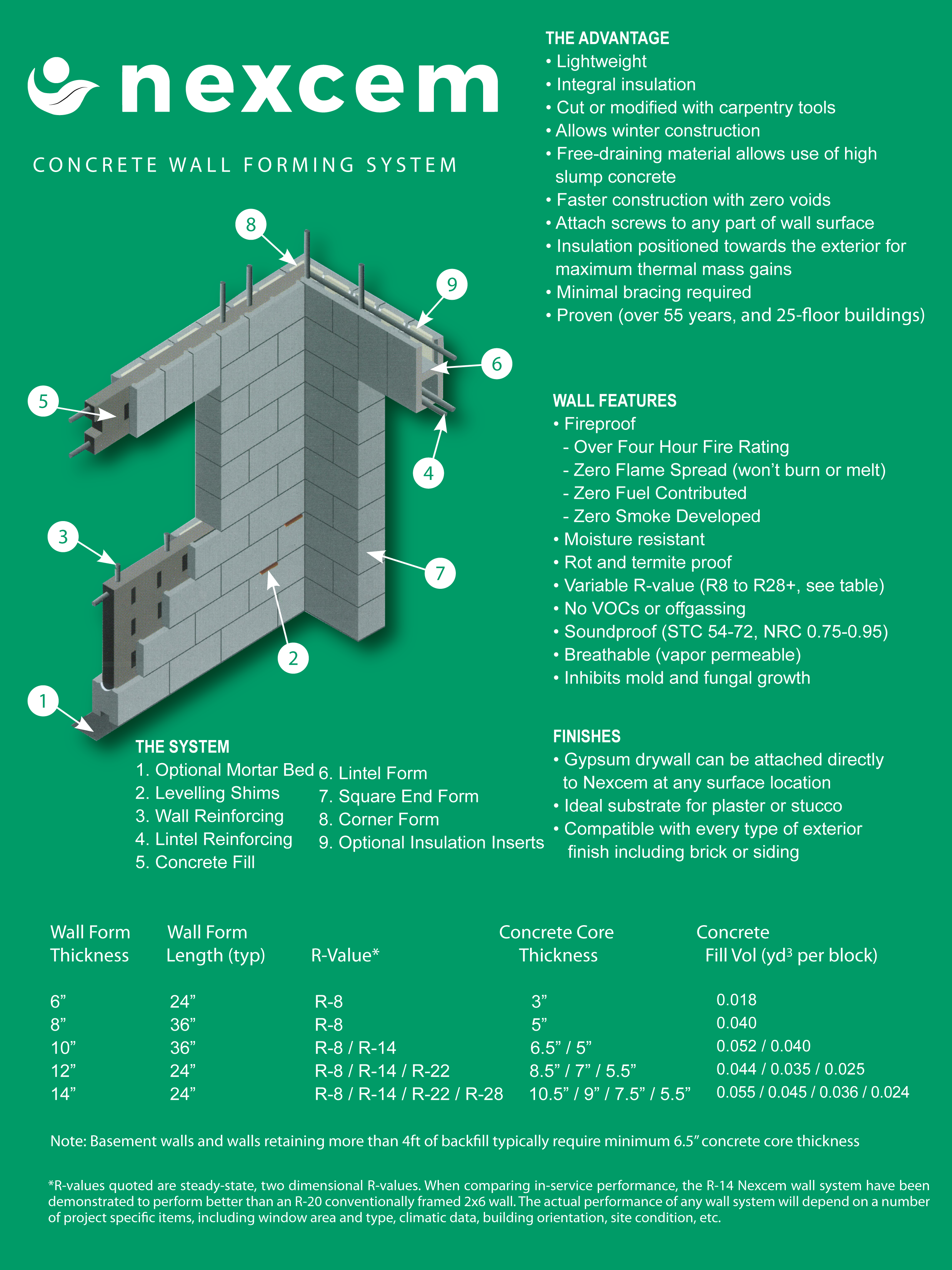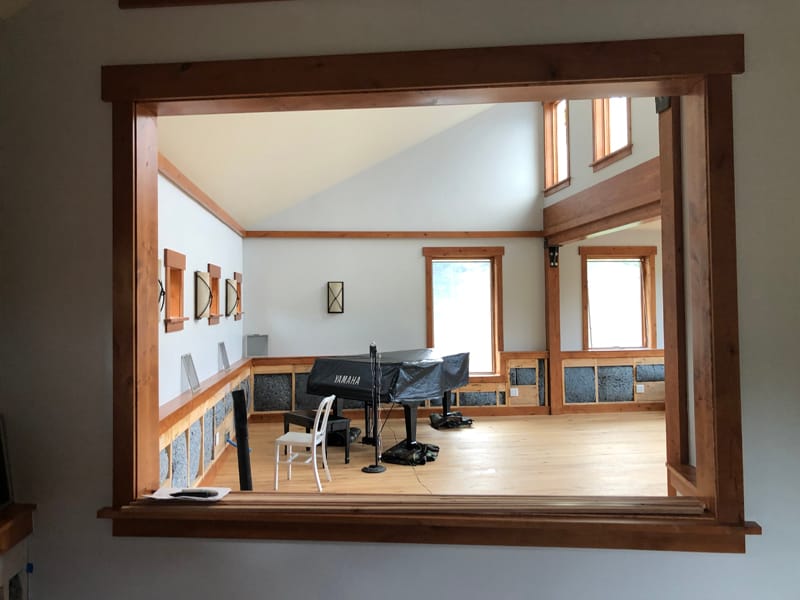Are you concerned with rising costs and the push for green building codes? Perhaps you value the environment and are interested in the benefits of an energy-efficient, concrete forms home.
Sustainable construction using insulated concrete forms is way of the future, offering very tangible benefits for the environment, builders and homeowners alike.
The green building market is growing. Of course, when we talk about sustainable construction, we aren’t just talking about building green.
Sustainable construction is about “environmentally responsible and resource efficient construction” (minimizing the use of natural resources), but the important part is that you should consider the entire lifecycle. This means from manufacturing – construction – maintenance – renovation and beyond.
If you want to build in sustainable manner, you should understand how insulated concrete forms (ICFs) are at the forefront of green building materials, qualifying for the most prestigious of green certification: LEED certification. In this blog post, you will understand exactly why sustainable construction means building with ICFs and more specifically with a product like Nexcem.
The Benefits of Sustainable Construction
Sustainable construction benefits everyone involved, from builders to homeowners and, of course, the world at large.
For builders, it’s important to recognize the rapid scale at which the green building market is growing, just as you saw above. Simply put, sustainable construction creates a market advantage. Client demand is the leading driver of sustainable construction (34%) per the most recent Green Building Trends study. If you aren’t able to provide sustainable construction services, you are eliminating yourself from a large and growing part of the market.
ICFs are a higher quality product and if you are a builder that uses ICFs, you are telling your clients that quality is very important to you and your business. There is also a low barrier to entry: only basic handset tools are needed. Green building also comes with various tax incentives.
For homeowners, green homes offer improved quality of life, from better health due to safer building materials, improved indoor air quality, reduced risk for mold growth and the reduction of noise pollution to increased comfort. Homeowners can expect lower operating costs and other monetary incentives as well, not to mention a safe, durable home that stands the test of time. Building your home with concrete has so many benefits that it is a (nearly) perfect choice.

Sustainable Construction = Building with Nexcem ICF
Here’s why Nexcem is the greenest (and cleanest) material out there:
- Made Up Of Recycled Materials
We only use clean , softwood waste lumber that would otherwise be sent to the landfill. We don’t use recycled hardwoods, pallets (that may have carried toxic chemicals or paints) or post consumer waste. We get our wood from truss manufacturers and other post-industrial waste sources.
- Sequesters Carbon
By re-purposing the waste wood, mineralizing it and encasing in cement, we are effectively sequestering the Carbon contained in the wood. This effectively offsets over 70% of the Carbon used in the generation of the cement and results in lower Carbon footprint product that is not possible with other cement or styrofoam products.
- Reduces Waste/Emissions & Fewer Natural Resources
With ICFs, waste is 100% recycled. In fact, ICFs only generate 1% of construction waste to begin with. This means that ICFs don’t contribute to the landfills and the methane emissions that are generated alongside filling up landfills.
- Energy-Efficient
When it comes to energy-efficiency, ICFs are the leader in the industry, designed to reduce energy consumption, maintenance and repair and to continue functioning in the most extreme weather events.
Consider, for example, the well-known study found that exterior walls made with ICFs require 44% less energy to heat and 33% less energy to cool compared to wood-frame walls, even when the two had a similar insulation value. This is known as the “ICF effect,” which is due to three properties of ICFs:
- Continuous insulation, providing an effective wall assembly R-value of R25 (or higher).
- Up to 60% lower air filtration than a conventional wall due to its airtight wall assembly. This not only maximizes the effectiveness of heating and cooling systems but also results in healthier living environments and a draft-free, comfortable living space.
- 5-day thermal lag due to the temperature moderating thermal mass of concrete. A recent groundbreaking study conducted by a fully SCC & IAC Accredited internationally recognized testing facility – the first of its kind – found that ICF walls had 60% less energy loss compared to a wood-framed wall when exposed to -35 degree celsius temperatures.
In contrast, more than half of the energy loss that occurs in a wood frame home is due to the combination of air filtration and heat loss through the wall. This is exactly why ICFs are often selected as the building material for net-zero energy homes.
Nexcem, in particular, offers three built-in energy savers for a combined 50% in energy savings.
- Resilient
Resiliency and sustainability go hand in hand. The steel reinforced concrete core of ICFs makes them disaster-resilient, able to withstand up to 300 mph hour winds, hurricanes, earthquakes and fires. Our unique material provides a surface that is also impact resistant and won’t burn or melt . You can take a blowtorch to our material and nothing will happen.
In a time when hurricanes and forest fires are on the rise (and are only projected to get stronger as the climate continues to warm), building disaster-resilient structures can mean the difference between being able to keep your family safe or not.
With ICFs, you can build with additional expense.
With traditional materials, the cost of lumber and other materials are increasing alongside the need to build resilient homes.
Furthermore, ICFs will not rust or rot unlike wood.
In Conclusion
With climate change already underway, sustainable construction will only continue to take precedence.
For builders, building with ICFs allows you to meet client needs, ever-increasing green building codes and combat the rising costs of traditional building materials and other associated costs. For homeowners, ICF homes are highly energy-efficient, durable and safe.
If you want to build sustainably, insulated concrete forms (ICFs) are the only choice.
Sources:
http://www.architecturetoday.co.uk/icf-sustainability/
Read more about the advantages of ICFs here.

